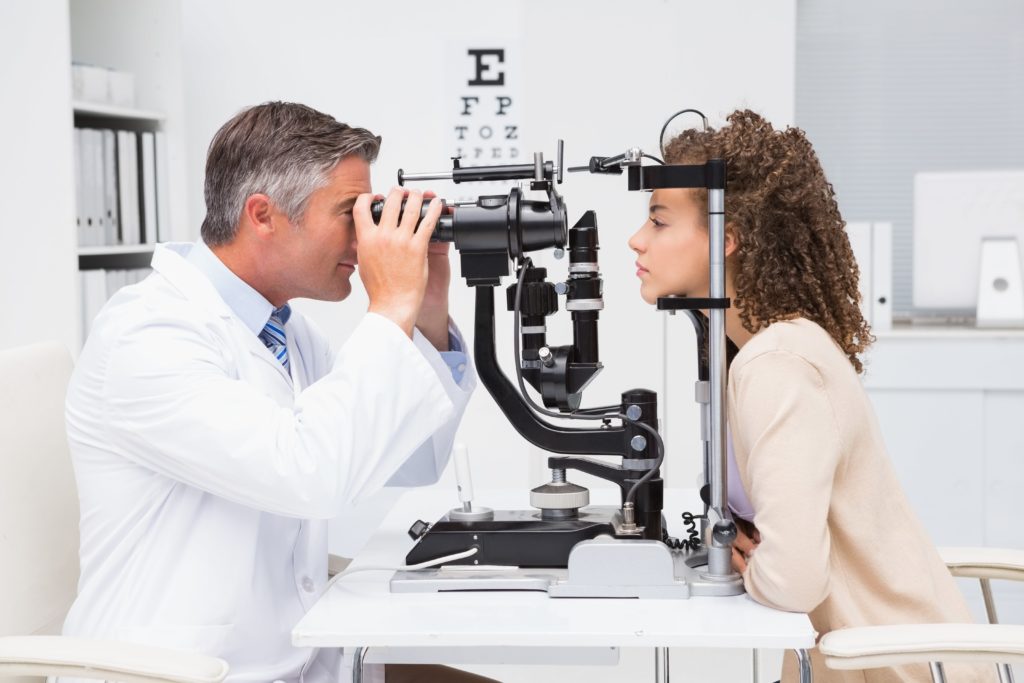
Visiting your optometrist regularly can help protect your eyes and make sure you are able to see for years to come. It may be easy to take your kids to visit the optometrist but don’t forget about going yourself.
Your optometrist can give you insight into the overall health of your eyes. It’s not just about your vision and whether you need glasses. Even if your eyesight is perfect, it doesn’t mean that your eyes are healthy.
The eye doctor will check if you have any early signs of eye conditions that include cataracts, glaucoma, and macular degeneration. Optometrists can even find health issues, like high blood pressure and diabetes, just from examining the eyes.
Regular Visits To The Eye Doctor
Kids should see an optometrist because they may not know what normal vision looks like, and those with undetected vision problems can have trouble learning in school.
A visit to the optometrist should be required every two years, but you will want to go more if you are over 40, if you have a family history of glaucoma, or have diabetes. A basic vision screening is not a substitute for visiting the optometrist.
Over time eye vision can become worse, especially due to the visually demanding world, where many jobs requiring long hours working on the computer. In addition to regular visits to the optometrist, eat a balanced diet, get regular exercise and protect your eyes from the sun.
How Age Can Affect Your Vision
After the age of 40, it can become difficult to focus on objects because of presbyopia, which is normal due to the hardening of the lens in the eye. As you continue to age, this becomes more advanced, so you may have to update your prescription glasses or contacts more frequently. Cataracts are more common during later years. Other age-related eye diseases could include macular degeneration, glaucoma, and diabetic retinopathy.
Macular degeneration is the leading cause of blindness for seniors. After age 40, the risk of glaucoma increases with each passing decade. Since many people can develop diabetes after 40, it’s important to pay attention to diabetic retinopathy, which can cause permanent vision loss.
Not only is vision affected by age, but there are also changes to the eye structure as age increases. Seniors can develop reduced pupil size, making them less responsive to ambient lighting. The eyes stop producing as many tears, making dry eyes a common problem. The loss of peripheral vision can also occur, so it’s important to be more cautious while driving.
Updating Your Prescription Glasses
If you are experiencing headaches, are squinting, or have eye fatigue or blurred vision, it may be time to update your prescription. If your glasses are old, it’s an indicator that you need to get an updated prescription because eyes can change over time.
Common Vision Changes that Should Be Checked

Even if you are regularly going to the optometrist if you experience sudden vision changes you should get your eyes checked. Any time you have blurry vision or have trouble seeing either close-up or distance objects, check with your eye doctor. Any pain in the eye should also be checked. Dry eyes can be a symptom of eyestrain and should be checked out.
Hormonal Changes
Often caused by pregnancy; hormonal changes also have an effect on the eyes. Water retention can increase the curvature of the cornea and cause vision changes, and for this reason, it’s not a good time to be checked for a new prescription.
Blurry Eyes
Can be caused by a number of things, including low blood sugar and diabetes. If you experience blurry vision, get your eyes checked.
Glaucoma
Symptoms can be dependent on the type you have. Acute glaucoma can be a sudden onset of severe eye pain along with blurred vision and is an emergency. Other times glaucoma would not be known without regular visits, or until there is damage to the eye.


